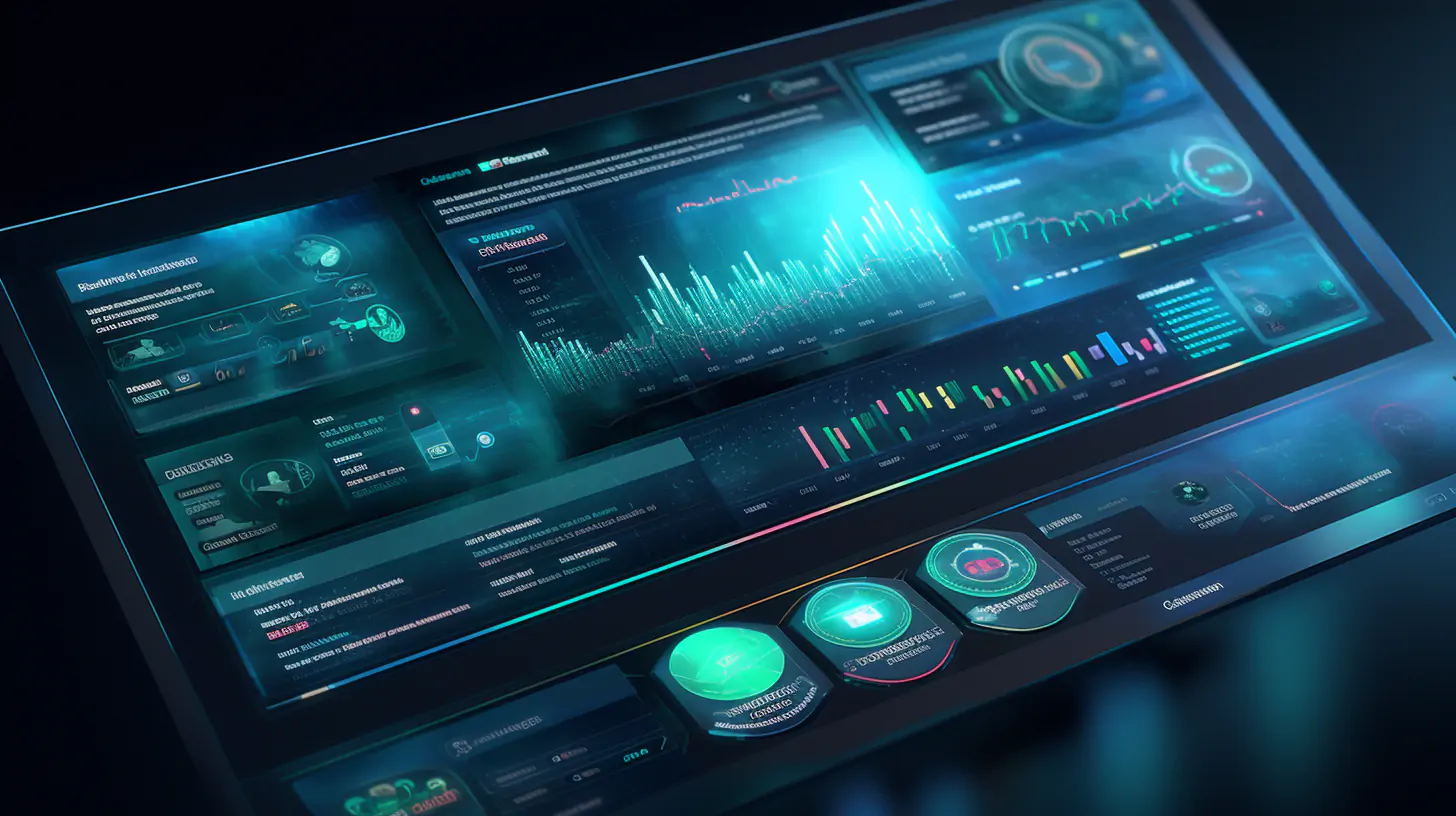Kanban, an Agile-based production efficiency system, can be applied to academic research to improve transparency, collaboration, and workflow. By visualizing the research process using Kanban boards, teams can identify and eliminate bottlenecks, implement pull systems, and facilitate continuous learning through feedback loops. Despite challenges, adopting Kanban in research can lead to increased productivity and teamwork.
Kanban is an Agile-based production efficiency system that has the potential to be used in academic research. Its qualities can increase the effectiveness of scientific research.

Research activities are often complex and multifaceted. Kanban, a method previously only used in industrial settings, can offer research teams a platform for task tracking and debottlenecking.
Visualization of work is the strength of the method. In academia, this includes tracking research projects.
The visibility of the approach promotes transparency and cooperation. It helps to detect congestion quickly. Once identified, such bottlenecks can be addressed immediately.
The principle of continuous learning and adaptation makes it suitable for academic research. Teams can review workflow and make adjustments through meetings. Iterative learning encourages the development of thinking and continuous improvement.
Exploration Process Mapping
Visualization of study steps increases transparency and efficiency. A research project includes hypothesis formulation, data collection, analysis, and publication.

These steps can be broken down into tasks.
Hypothesis formulation: Research questions and objectives are established at the beginning of the project.
Data collection: Tasks may include literature reviews, experiments, surveys, or field studies.
Analysis: Data cleaning, statistical analysis, interpretation, and hypothesis testing.
Publication: This is where research results are recorded, edited, and submitted for publication.
Kanban boards can provide real-time updates on the progress of a research project by categorizing these milestones.
Kanban boards have a simple structure:
To do | In progress | Done |
|---|---|---|
Data collection | Analysis | Hypothesis Formulation |
Publication | - | - |
Research moves from Doing to In Progress to Done. This smooth movement makes it easy to see which tasks are running, completed, and not yet started.
The Kanban board, a key component of the workflow display, is constantly updated to reflect the project's status. It prevents overload, balances tasks, and ensures a smooth transition between stages.
Implementing Pull Systems: The Core Idea of Kanban. Tasks move forward when opportunities avoid overwhelming team members and ensure they only work on what they can handle.
Limit work in progress (WIP): This rule limits the team's workload. Limiting tasks prevents burnout and improves results.
Thus, academic research on Kanban is based on workflow mapping. By visualizing the research process, teams can increase efficiency, reduce waste, and optimize collaboration.
Visualization of the research process
The method helps to visualize the project status, task stages, and progress. Each column displays the status of the task in real-time.

Team members can see what is happening, what is expected, and what has been done. A more productive collaborative workspace reduces the number of status update meetings.
Kanban boards also show task dependencies. "Data Analysis" cannot begin until "Data Collection" is completed. The board enforces task order, prevents bottlenecks, and aids project management by making these dependencies explicit.
Pull systems in research
Pull-based systems are great for academic research. Push systems in which tasks are assigned differ from this approach.

Instead, people choose and "pull" tasks they can handle.
Fundamental aspect: demand. The pull system works on the principle of demand. Tasks are executed only when it is possible to start new ones.
The researcher completes the task and moves it to the Done column on the Kanban board. He "pulls" a new task from the "To Do" column to "In Progress" when he has the opportunity. This sets off a chain reaction that moves other tasks up in the queue.
Empowerment of researchers. This pull mechanism allows team members to manage their workloads. This autonomy increases engagement and creates an environment where quality is more important than quantity.
Restrictions on work in progress. Pull-based systems limit work by starting new tasks only when resources are available. This dynamic allows workloads to be managed.
The pull system in academic research improves work management, efficiency, accountability, and research quality. Kanban shows how pull systems can improve academic research management.
Better Collaboration
It is a key advantage when using Kanban in academic research.

Increases transparency. A visual Kanban board informs the team about the status of the task, who is working on what, and what's next. Transparency improves rapport and teamwork.
The Kanban board becomes the canvas on which the entire team paints a picture of progress.
Encouraging communication. Kanban then encourages team communication. Task card movements allow team members to discuss progress, challenges, and strategies.
For example, moving a task card from "In Progress" to "Done" can spark discussion about what has been done well, problems, and future tasks.
Responsibility education. The pull system allows researchers to own their work. This approach improves teamwork, accountability, and belonging.
Settlement of conflicts. Visibility helps resolve conflicts. Early detection and collective decisions prevent misunderstandings.
It strengthens research teams through transparency, communication, accountability, and conflict resolution.
Eliminate research bottlenecks
Obstacles in the process are easy to spot on the Kanban board. The task column highlights potential difficulties.

The piling up of tasks is not just an obstacle - it is a clear signal for the team to intervene.
Fast resolution. When a bottleneck is identified, the team can immediately take corrective action. The team can improve the workflow by understanding its causes, such as lack of resources or complexity of tasks.
Development with experience. After the decision is made, monitoring should be carried out. Has the problem decreased? Observations provide a cycle of continuous improvement, making the workflow sustainable.
Anticipating the future. Iterative learning helps to predict and resolve complexity. Anticipating problems prevents them from growing.
The Importance of the Feedback Loop
Feedback loops are essential when applying Kanban to academic research.

Signal for improvement. This encourages continuous improvement through feedback. The path of each task on the board shows the effectiveness of current strategies and areas for improvement.
Each movement of the task is a story, its interpretation leads to knowledge and improvement.
Expanded collaboration. Feedback loops encourage collaboration. Kanban boards encourage task progress, problem identification, and collaborative solutions. This continuous dialogue unites and engages the team.
“Feedback-Driven Dialogue” might be a motto that captures the essence of Kanban collaboration.
Training and adaptation. Feedback loops aid learning and adaptation. Once the task is completed, the team can quickly apply the lessons learned. This improves research efficiency.
Predictive power. Over time, the team can better predict task times, potential challenges, and effective strategies. This makes workflows smoother and more predictable.
Conclusion
Kanban brings clarity to planning in academia, simplifies collaboration, and speeds up workflow. Stops are cleared quickly, and feedback loops ensure people are always learning and improving.

"Efficiency and improvement are the cornerstones of Kanban implementation in academic research."
Although there are implementation problems, they can be solved.
In the ever-changing world of academic research, such methods can help improve productivity, work better in teams, and keep learning.
Moving from traditional research methods to agile methods like Kanban is a paradigm shift that will help academic research have a bright future.
FAQ
How can Kanban help in managing collaborative research projects with external partners or institutions?Kanban provides a transparent and easily accessible platform for all stakeholders, regardless of their location. By using a shared digital Kanban board, research teams can communicate progress, dependencies, and potential bottlenecks with external partners, fostering better collaboration and alignment.
What role does the concept of "kaizen" (continuous improvement) play in Kanban for research?Kaizen is a key principle in Kanban, encouraging teams to continuously identify and implement small improvements in their processes. In research, this mindset promotes a culture of learning, experimentation, and adaptation, leading to more efficient and effective workflows over time.
Can Kanban be used for managing non-research tasks in an academic setting, such as teaching or administrative duties?Yes, Kanban's flexibility makes it applicable to various tasks beyond research. Educators can use Kanban to plan and track their teaching activities, while administrators can manage projects and workflows related to their responsibilities. Kanban's visual nature helps in balancing multiple commitments and ensuring a smooth flow of work.
How does Kanban support the concept of "systems thinking" in research?Kanban encourages a holistic view of the research process, considering the interactions and dependencies between different tasks and team members. By visualizing the entire workflow, Kanban helps identify systemic issues and opportunities for improvement, promoting a systems-thinking approach to research management.
What are some best practices for introducing Kanban to a research team that is new to Agile methodologies?When introducing Kanban to a new team, it's essential to start with a simple setup and gradually evolve the process based on the team's needs. Provide training and support to help team members understand Kanban principles and practices. Encourage open communication and regular feedback to foster a culture of continuous improvement.
Can Kanban be used in conjunction with other project management tools or software?Yes, Kanban can be used alongside other tools and software. Many digital Kanban boards integrate with popular project management and collaboration platforms, allowing teams to centralize their work and communicate more effectively.
How can Kanban help in managing the balance between research exploration and exploitation?Kanban's visual nature allows teams to clearly see the mix of exploratory and exploitative tasks in their workflow. By setting appropriate work-in-progress limits and prioritizing tasks, teams can ensure a balanced approach to research, allocating resources to both new ideas and the refinement of existing knowledge.
What are some common misconceptions about Kanban in the context of research?Some common misconceptions include the idea that Kanban is only suitable for simple or repetitive tasks, that it requires a strict adherence to a predefined process, or that it's a replacement for proper project planning. In reality, Kanban is adaptable to complex research activities, promotes flexibility and continuous improvement, and complements effective project management practices.
How can Kanban support the development of a more agile and responsive research culture in academia?By promoting transparency, collaboration, and continuous improvement, Kanban helps foster a more agile and responsive research culture. It encourages teams to embrace change, learn from failures, and adapt their processes based on empirical evidence. Over time, this mindset can spread throughout an academic institution, leading to a more dynamic and innovative research environment.




